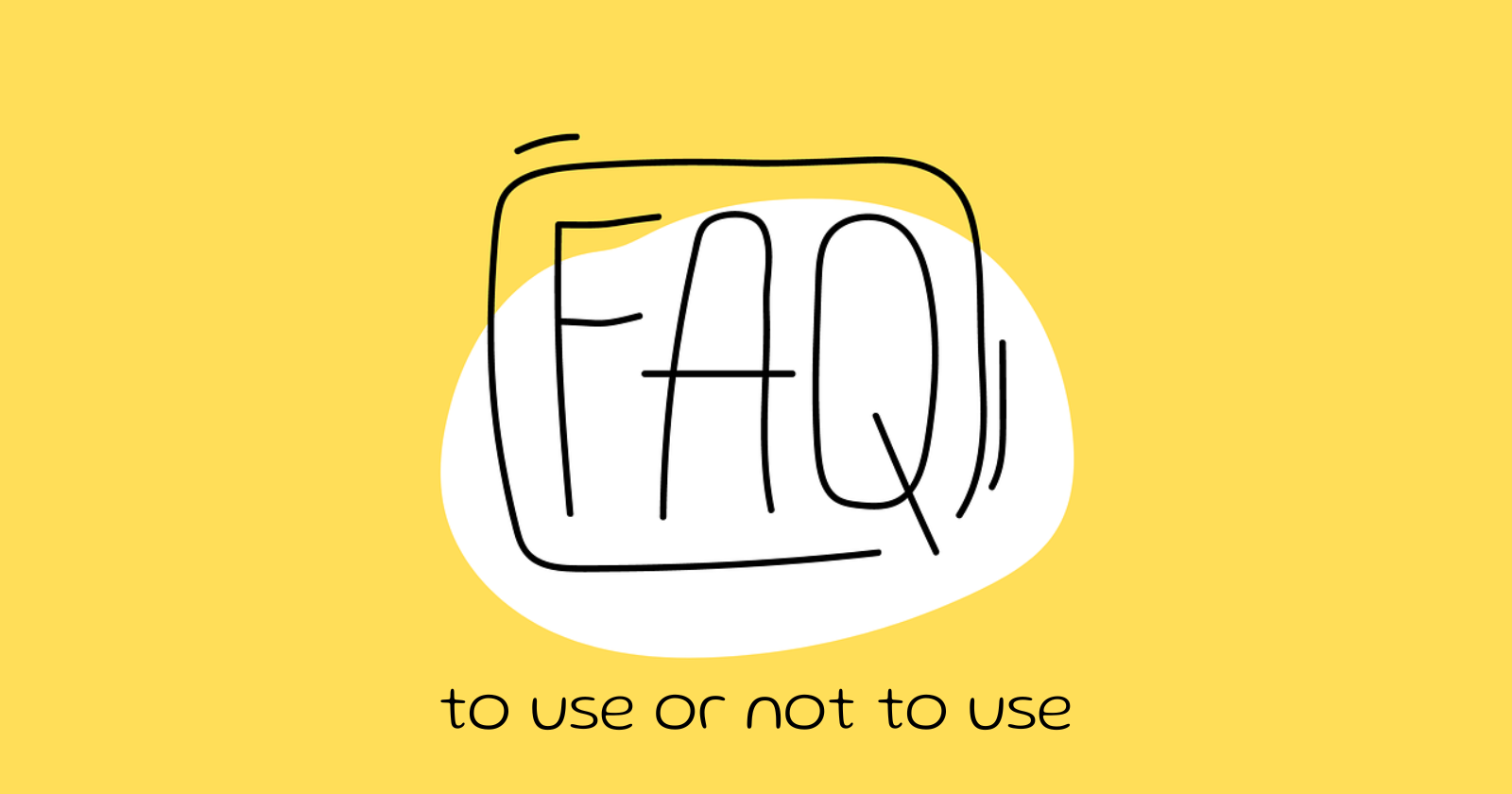To Use or Skip FAQs: What’s Better?
 Chioma Daramola
Chioma Daramola
"Frequently Asked Questions" (FAQs), just like the phrase says, are a compiled list of commonly asked questions and their answers. It began in the 1980s, on discussion boards where regular contributors compiled lists of FAQs. This was so that they wouldn’t have to repeat information for newcomers.
FAQs are controversial in technical writing. Critics (especially experienced tech writers) say that FAQs should be avoided entirely in documentation. They see it as a lazy way for writers to dump information on the user without putting much thought or structure into what they are writing.
Problems with using FAQs
1. They get in the way
FAQs usually contain many lines of "What does…?," "How can…?," “Can I…?,” etc. That gets in the way of the important content, which appears at the end of each sentence. Also, the FAQs aren’t found where readers expect. It, most times, has a section of its own, and readers/users may not check it and instead look for answers elsewhere.
2. The list grows
As more questions come in, the list of FAQs increases, until it’s a “ridiculous hodgepodge of information thrown together, with no larger story or narrative,” as Tom Johnson says.
3. They expire
FAQs are often difficult to maintain because they have an expiry date. Instances are when a particular set of FAQs is valid until a person is done with their onboarding, or works for a version of a product, but not for another version of the same product.
Some FAQs are not updated regularly. They are left with old information for long periods.
So, what can you do?
1. Structure the document satisfactorily
When a document is well-structured and designed to answer a reader's questions, it lets the reader find the answers easily. And there won’t be a need for FAQs.
If you have a lot of information that you want the user to know, but can’t fit into the existing documentation or website, resist the temptation to put it on the FAQ page. Instead, find a way to work the information into your existing documentation/content.
2. Regular updates
If you must use FAQs, ensure that they are up-to-date and relevant, the same way you do with other content and documentation.
3. True FAQs
Don’t include questions you think your users will ask. Real questions can be compiled from those obtained from feedback gathered from users during beta testing and after launching. Keep your list to a maximum of 10 most-asked questions, with no more than 3 sentences each, accompanied by links to the documentation where more details can be found.
Don’t write a FAQ page for the sake of having one. If there are no FAQs, then there is no need to have an FAQ page.
4. Use alternatives to FAQs
Offering support on social media platforms, chatbots or live chat, and creating instructional videos are options worth exploring.
Over to you. What are your thoughts about using FAQs?
Subscribe to my newsletter
Read articles from Chioma Daramola directly inside your inbox. Subscribe to the newsletter, and don't miss out.
Written by

Chioma Daramola
Chioma Daramola
I'm a skilled communications and multimedia professional turned content designer and technical writer.